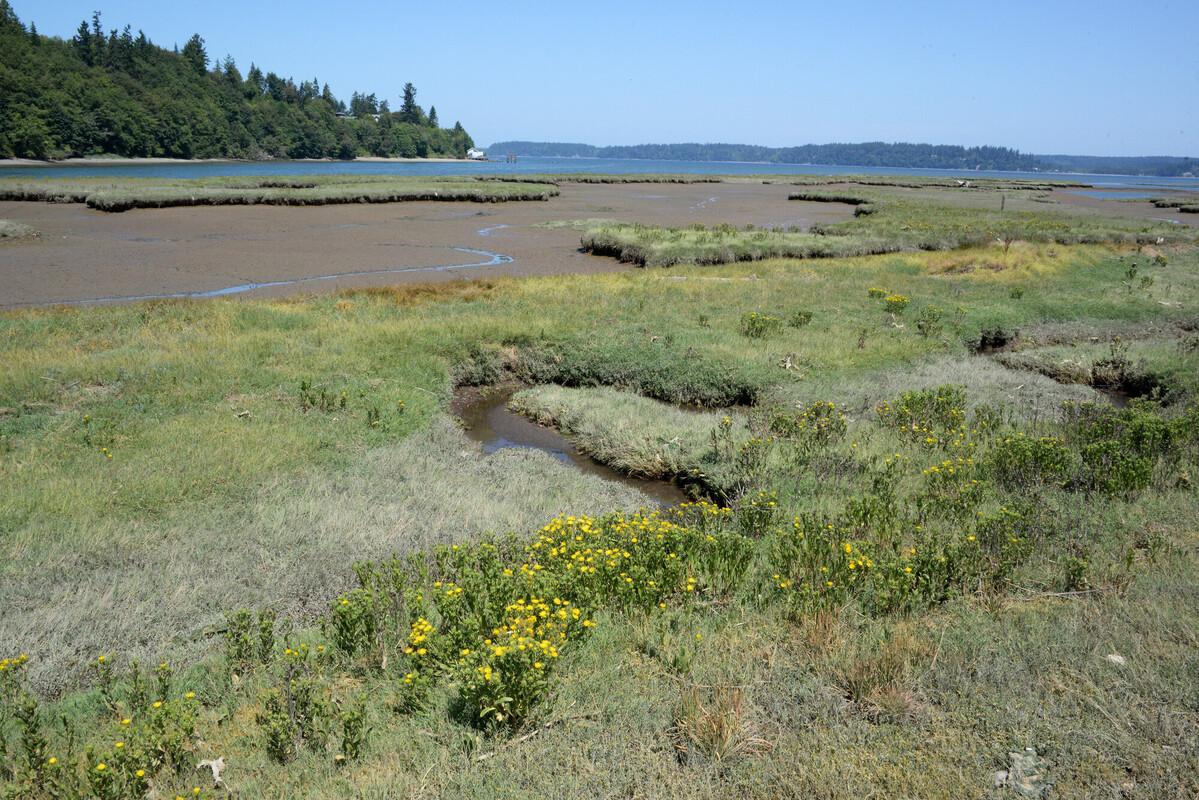ARCHIVED NEWS RELEASE
This document is provided for archival purposes only. Archived documents
do not reflect current WDFW regulations or policy and may contain factual
inaccuracies.
News release Feb. 27, 2023
Contacts: Jennifer Griffiths, WDFW, 360-706-4302
Devan Rostorfer, DNR, 360-870-7158
Media Contacts: WDFW, Eryn Couch, 360-890-6604
DNR, Joe Smillie, 360-688-3392
OLYMPIA – The Washington departments of Fish and Wildlife (WDFW) and Natural Resources (DNR) are investing about $14 million in funding in 25 projects that advance Puget Sound habitat recovery.
This investment will help to advance habitat restoration and protection efforts to restore eelgrass habitat and enhance kelp forest conservation, expediate floodplain and estuary restoration projects, and provide incentives to private landowners to improve habitat along shorelines and streams and in working farms and forests.
Projects will also provide information and tools to increase resiliency for people and habitat to climate change and assist local governments with land use planning efforts to protect habitat and natural resources.
“This investment will be a big boost for healthy Puget Sound habitat,” said Jennifer Griffiths, Ph.D., WDFW Habitat Strategic Initiative Policy Lead (HSIL). “We’re proud to work alongside DNR and the Environmental Protection Agency (EPA) to help advance these projects and applaud our congressional leadership for continuing to champion investments in Puget Sound.”
“We’re excited to support investments in habitat protection and restoration activities that traditionally have fewer dedicated funding sources,” said Devan Rostorfer, DNR Habitat Strategic Initiative Policy Lead. “This includes investments in innovative pilots and program development, and supporting important planning, assessment, design, and outreach efforts that are necessary to get projects shovel-ready for implementation.”
Selected funding recipients include tribal, local, and state governments; conservation districts; academic organizations; and nonprofits. For more information about the funded projects, visit the Habitat Strategic Initiative Lead website.
Funding for the projects comes from the Environmental Protection Agency’s (EPA) Puget Sound Geographic Program through the Habitat Strategic Initiative Lead (HSIL), a partnership between WDFW and DNR to preserve and restore Puget Sound habitat through strategic planning, funding, outreach and collaboration. The congressional appropriation for the Puget Sound Geographic Program recently increased, allowing EPA to direct more funding to the HSIL and in turn provide about $5 million more than originally anticipated to advance habitat recovery quicker.
The HSIL developed investment priorities in partnership with an advisory team and include changing planning paradigms, enabling project development and readiness, encouraging behavior change, strengthening regulatory support, and increasing information and evaluation necessary for habitat planning, policy, implementation and decision-making. Selected projects went through a robust review process in consultation with policy professionals and subject matter experts from the Puget Sound recovery community.
Created in 2016, the HSIL implements the Puget Sound Action Agenda through stewarding and investing in the habitat implementation strategies for floodplains and estuaries, land development and cover, marine vegetation, and shoreline armoring. HSIL is one of three Puget Sound strategic initiatives, which also include the Stormwater and Shellfish Strategic Initiatives.
The Washington Department of Fish and Wildlife works to preserve, protect and perpetuate fish, wildlife and ecosystems while providing sustainable fish and wildlife recreational and commercial opportunities.
DNR manages 1,300 miles of trails and 160-plus recreation sites in 3 million acres of working forest state trust lands and 97 natural areas. DNR trust lands provide clean water, and generate revenue for public services and school construction. DNR also oversees 2.6 million acres of state aquatic lands, rule administration for 12 million forested acres, the Washington Geological Survey and wildland firefighting across 13 million acres of forestland.
